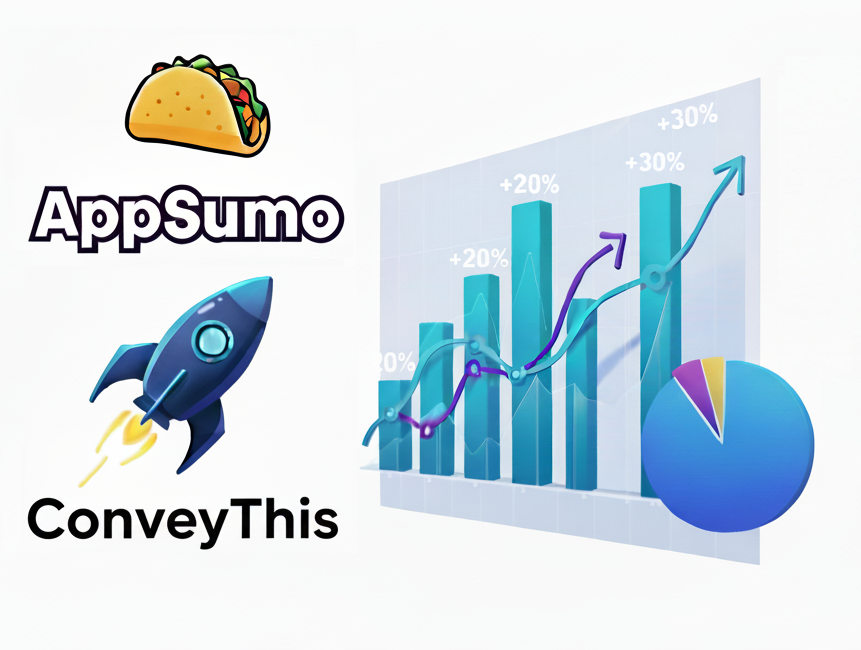MultilingualPress Alternative: Vælg ConveyThis for flersprogede websteder
Et alternativ til flersproget presse: Hvordan er vi bedre?
ConveyThis tilbyder en problemfri hjemmesideoversætter med blot et enkelt klik. Med over 100 sprog er det nemt at tiltrække internationale målgrupper til dit websted - og sammenlignet med MLP er det her, hvad vi gør bedre:

20+ integrationer
ConveyThis virker på mange hjemmesider designere og e-handelsplatforme som WordPress, WooCommerce, Wix, Squarespace og kan endda arbejde med JavaScript!
Nøjagtige og ekspansive sprogmuligheder
ConveyThis bruger maskinoversættere til hurtigt og præcist at oversætte hele dit websted med et klik på en knap. Det er blevet brugt af Microsoft, Tickets.com, SERVPRO og mere!
Betal mindre, få mere!
ConveyThis’ abonnementer er både overkommelige og bekvemme. Vores planer om måneden giver dig mulighed for at opgradere og nedgradere hurtigere sammenlignet med MultilingualPress’ årlige planer - og vi tilbyder en evigt gratis plan - som MLP ikke har!
Sammenlign vores priser?
| Feature | ConveyThis | Weglot | |
| Starter | Pris | $7,99/måned | $15/måned |
| Ord | 15000 | 10000 | |
| Sprog | 1 | 1 | |
| Bedste mulighed | |||
| Forretning | Pris | $14,99/måned | $29/måned |
| Ord | 50000 | 50000 | |
| Sprog | 3 | 3 | |
| Bedste mulighed | |||
| Pro | Pris | $39,99/måned | $79/måned |
| Ord | 200000 | 200000 | |
| Sprog | 5 | 5 | |
| Bedste mulighed |
30-dages pengene-tilbage-garanti
Hvis du efter at have brugt ConveyThis i 7 dage, og du ikke er tilfreds, skal du blot kontakte vores supportteam via chat eller e-mail, så behandler vi din anmodning om refusion. Ingen spørgsmål stillet! Hvis 7 dage ikke er nok tid til at lære ConveyThis at kende, kan du forlænge pengene-tilbage-garantien til 30 dage ved at dele din feedback med os om, hvordan vi kan gøre ConveyThis endnu bedre!


Store SEO-fordele
Nye indholdssider at crawle, indeksere og sende trafik til
Oversættelse af META TAGS: HEAD, KEYWORDS og DESCRIPTION
Augmented Sitemap.XML med nye oversatte sider
Forstærkede HREFLANG-tags for at hjælpe Google med at finde nye sider
Integrationer med indkøbsvogne for at øge salget
Oversættelse af Image ATL tags
Yderligere funktioner
Alle betalte planer har følgende avancerede funktioner:
- Omdirigere besøgende til oversatte sider automatisk baseret på brugerbrowserens indstillinger
- Oversæt medier (adopter billeder til et bestemt sprog)
- Oversæt PDF (vedtag PDF-filer til et bestemt sprog)
- Tillad at ændre tekstretning fra venstre til højre og omvendt
- 112 Sprog at vælge imellem

Oversættelse, langt mere end blot at kunne sprog, er en kompleks proces.
Ved at følge vores tips og bruge ConveyThis , dine oversatte sider vil resonere med dit publikum, følelse indfødte til målsproget.
Selvom det kræver en indsats, er resultatet givende. Hvis du oversætter et websted, kan ConveyThis spare dig timer med automatiseret maskinoversættelse.
Prøv ConveyThis gratis i 3 dage!
 Ingen kortoplysninger
Ingen kortoplysninger


